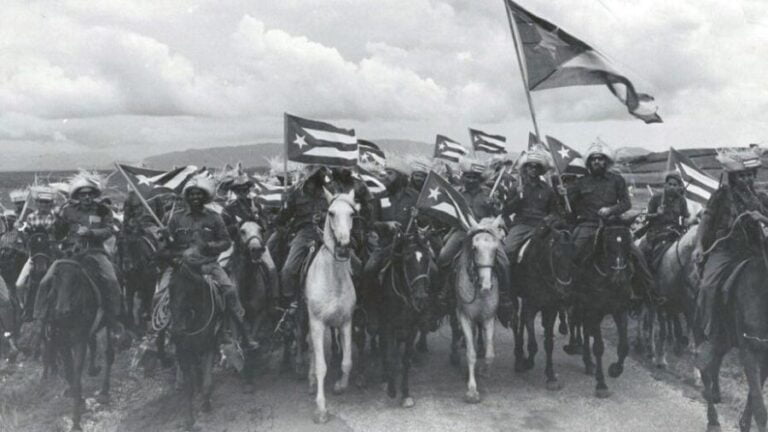Forgotten History of the Persian Corridor
“The Red Army: for the Sake of History and Generations” and “The Historical Significance of the 75th Anniversary of Victory over Fascism” are some of the headlines appearing in the Iraqi media these days.
These are echoes of the Soviet people’s celebration of victory which has not been forgotten in Iraq. And although the Iraqis did not directly participate in the battle against the fascist armies, they nevertheless contributed to the war effort. Evidence of this can still be seen today in largely forgotten or little-known facts. The first time I heard about them was from a local called Nanu Ishu back in the 1980s, when I was a correspondent and the future head of the Iraqi office of the Novosti Press Agency (APN), the predecessor of today’s RIA Novosti.
This man who was already retired told me that he got a job at a factory near the Iraqi Port of Basra in 1942, and it was through this port that the American and British Lend-Lease aid to the USSR was delivered. The Americans called this supply route used by the Western allies to deliver millions of tons of cargo to Moscow through the Persian Gulf “the Persian Corridor”. Unloading began at the Iraqi ports of Basra, Margil, Umm Qasr, Cheybassi and at the Iranian ports of Abadan, Khoramshahr and Bushehr before supplies passed through Iraqi and Iranian territory.
The Persian Corridor operated from 1941 to the end of 1944 as an extension and alternative to the Northern route across the Arctic. The latter was treacherous, as the oceangoing convoys from the United States and Great Britain to Murmansk and Arkhangelsk were heavily bombed and torpedoed by the Nazis.
According to Ishu, equipment was being assembled at full tilt in aircraft and vehicle assembly units built by the British and Americans in the port city of Basra and at the settlement of Rafadiya despite the sweltering subtropical heat and humidity, which was then checked and approved by Soviet military and civilian specialists who were on the ground.
Similar enterprises began operating in nearby Shaiba in the middle of 1942, where a Soviet military camp was set up to support these operations, which remained there until October 1944.
The logistics of transport operations were organized by the Soviet Directorate of Transportation (SDT), staffed by 1,500 personnel including 775 Soviet citizens. Many units were headed by Red Army officers with specialist knowledge on aircraft and vehicle operation, rail and road transport routes, ammunition storage, and on the logistics of transporting supplies to the home front.
Assembled aircraft with Soviet crews flew through Iranian airspace to Soviet territory. Trucks, military equipment, ammunition, food and fuel were transported to the Iranian border via the Iraqi railway network, and then on to the southern borders of the USSR.
There were separate road transport routes. There was a major shortage of military and civilian drivers to transport supplies. No driver could possibly make the two-thousand-kilometer journey from the Persian Gulf to the borders of the USSR more than once a month. The help of local personnel had to be enlisted with urgent training.
In terms of transport infrastructure, the “Persian Corridor” was a bottleneck, and the allies were constantly working to free it up. In August 1941, only 10 thousand tons of cargo could pass through the Persian Route per month, but by January 1943 it could handle up to 51 thousand tons.
Cargo convoys sent though the corridor continued to increase. Overall, more than 23% of the military cargo (by tonnage) the Allies sent to the Soviet Union during the war passed through the Persian Corridor. According to an Iraqi news source, this was an estimated 4.2 million tons of cargo (.
Of all the main American and British supply routes to the USSR, transit through the Persian Gulf was the longest but also the safest of them. Even more cargo was supplied through this route than by the famous Arctic convoys.
The records of some of the deliveries are rather impressive. For instance, 483 thousand vehicles were transported to the USSR through the corridor while it was in operation, many of which were Studebakers.
The archival reports of Soviet diplomats note that the Soviet military officials were well received by ordinary Iraqis and the authorities. Officers were greeted when they were seen walking down the streets.
According to Nanu Ishu, Iraqi workers employed at transit points would often write greetings in Arabic addressed to the Red Army and drew red stars on the boxes and containers that were to be sent to the USSR.
The Persian Corridor operations have all but been forgotten in today’s turbulent region, but the Persian Corridor remains an example of how allies and people of different nationalities can come together in the Middle East to cooperate in the fight against the common enemy of fascism.
By Yury Zinin
Source: New Eastern Outlook







